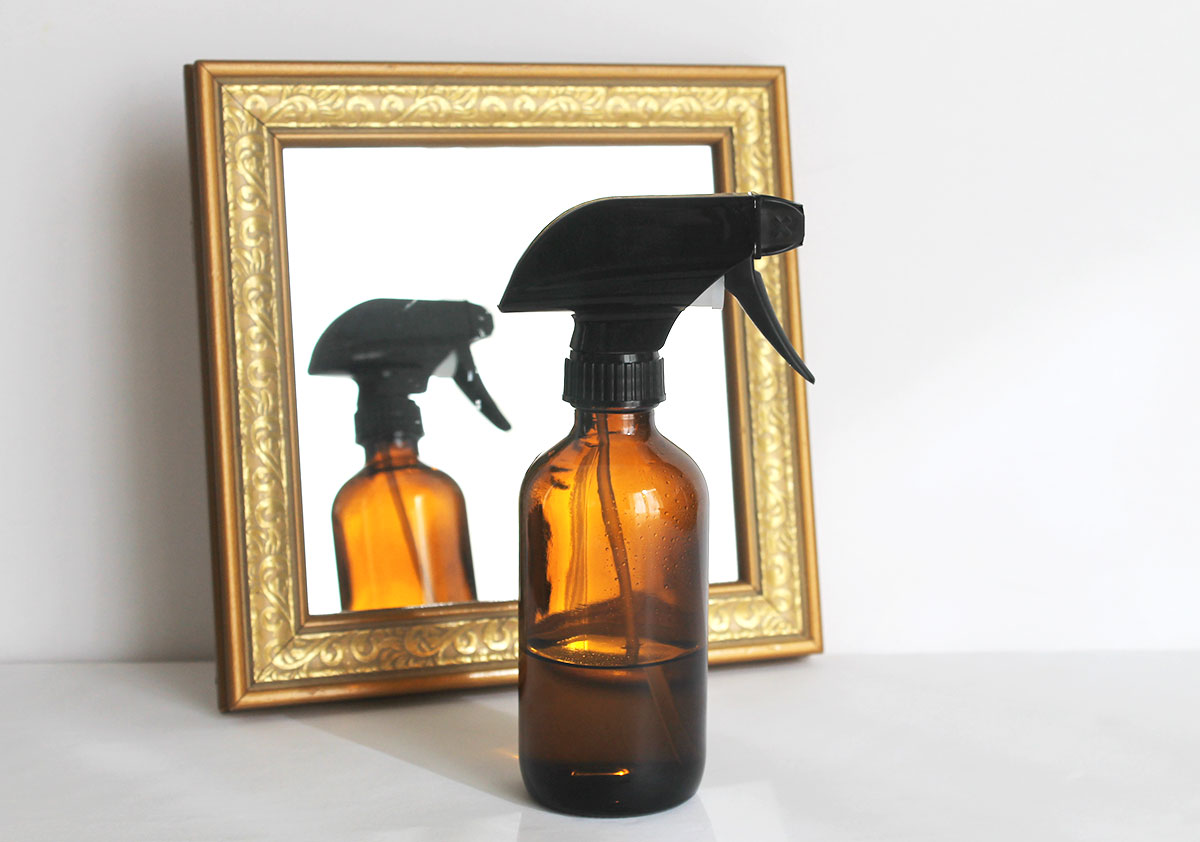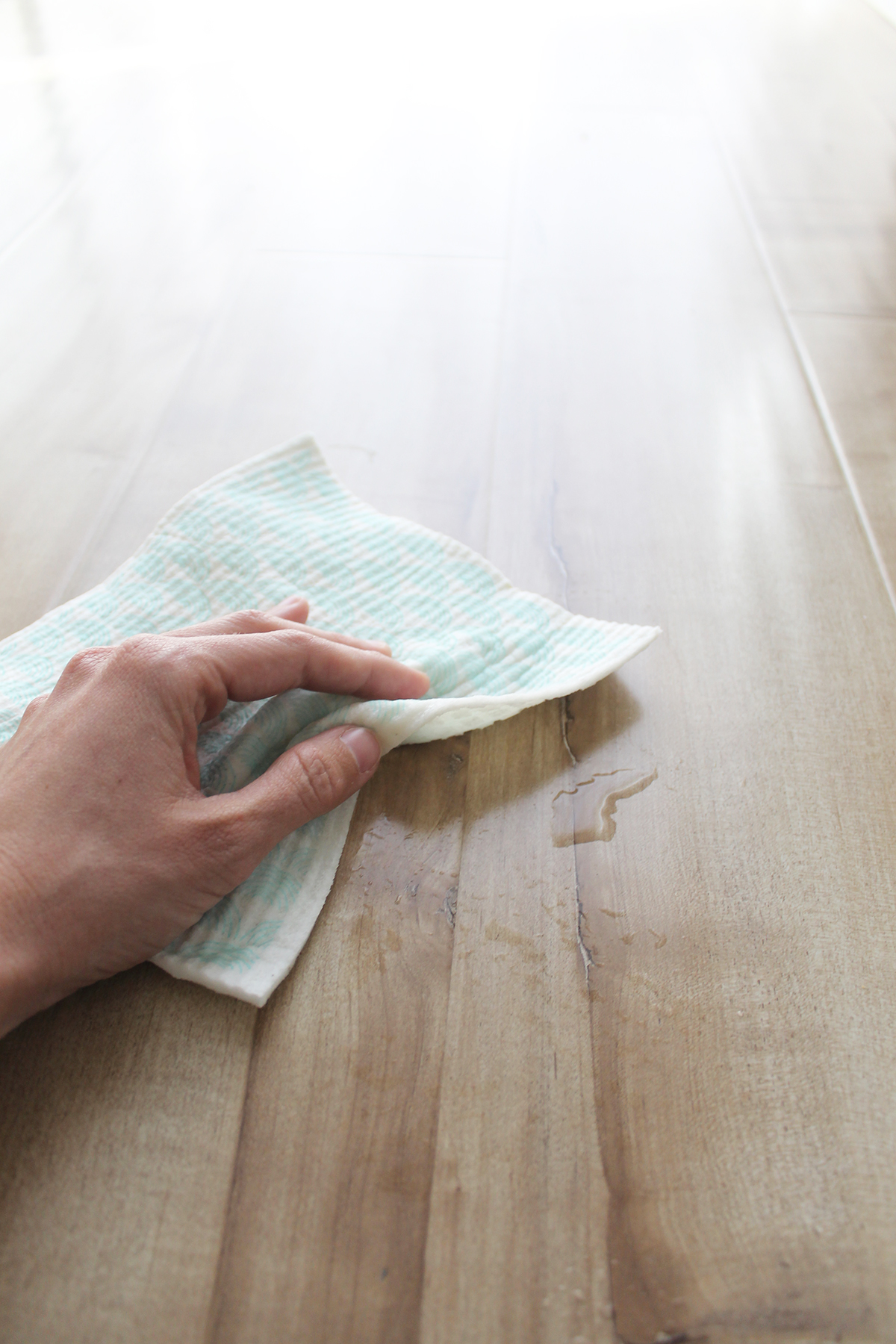How to Remove Cooking Oil from Clothes

From sautéing to salad dressing, oils in the kitchen are bound to get on your clothes. While the smaller spots might easily come off in a standard wash, those larger stains can be a pain.
But before you convert your stained shirt into a cleaning rag, there are a few easy steps you can take to remove cooking oils from clothes.
I’ll cover how to remove cooking oil from clothes in fabrics like cotton, as well as from trickier fabrics like wool and cashmere.
Quick Navigation
How to Remove Cooking Oil from Clothes
Materials
- Paper towels or rag towel
- Baking soda or cornstarch
- Cleaning toothbrush
- Dish soap
- Laundry detergent
- White vinegar
Step 1: Blot with a Towel
Try to blot as much oil as you can with a paper towel or a clean, white rag towel.
If you use a microfiber or cotton cleaning towel that is colored, you risk transferring dyes to your garment.
Step 2: Cover with Baking Soda or Cornstarch
Grab your baking soda! Set your stained garment on a flat surface and sprinkle a small pile of baking soda over the stain – anthill style.
Don’t have any baking soda on hand? Cornstarch is incredibly effective (sometimes even more so than baking soda).
Let the baking soda or cornstarch sit on the stain for 30 to 60 minutes.
Step 3: Brush Away Baking Soda
Scrub the baking soda off of the garment using a toothbrush.
If the baking soda starts to clump up that means it is properly absorbing the oil. The baking soda may even take on the color of the cooking oil.
Don’t worry if some baking soda residue remains, it will wash out in the next step.
Step 4: Scrub with Dish Soap
Pour dish soap over the baking soda, just enough to cover the stain. Massage the dish soap into the baking soda.
You can also use your cleaning toothbrush here for more scrubbing power on sturdier fabrics.
Give your soapy garment a thorough rinse under running water before throwing it into the washing machine.
You should always avoid putting a garment that has any amount of dish soap in the fabric into the washing machine—excess soap suds are a known way to ruin a washing machine!
Step 5: Wash in the Washing Machine
Wash the garment in the washing machine using your preferred detergent, following the instructions on the garment care label.
You can also try adding 1/2 to 1 cup of white vinegar to the wash cycle (or in the fabric softener compartment) to make the detergent more effective.
Step 6: Air Dry
Dry time! But not in the dryer. Air dry completely to ensure the stain is gone before washing/drying regularly in the future.
Heat from a dryer will set that oil stain and make it harder to remove.
Additional Tips for Removing Oil Stains from Clothes
Removing Old and Set in Oil Stains from Clothes
If you have an old oil stain that has set into your garment fabric, don’t lose hope just yet!
While stain removal at this point might be difficult to do with all-natural, DIY stain removal techniques, there are still a few household products that you might already have on hand worth trying.
LESTOIL or PINE SOL
The first are Lestoil and Pine Sol. Both of these products work effectively at lifting oil stains from clothing.
Just dab at your stain with a bit of one of those products before laundering as usual.
As mentioned above, let your garment air dry completely after washing to confirm that the stain has been removed. Heat from the dryer can and will set in oil stains.
WD-40
Don’t have Lestoil or Pine Sol on hand? Another product worth trying is WD-40.
Apply it to your garment and allow the product to sit for 15-30 minutes.
Next scrub a little bit of laundry detergent into the stain before laundering.
Again, air dry completely to confirm the stain is truly gone.
OXICLEAN
And if neither of those options work, one additional way to remove an oil stain that is old or set in your clothes is by doing an overnight soak in an oxygen bleach like OxiClean.
Oxygen bleach is a compound of natural soda crystals and hydrogen peroxide and is considered to be safe on colors.
For more insight on how to remove older stains, head to this blog post.
Removing Oil Stains from Wool and Cashmere
Given the more sensitive nature of these fabrics, removing oil stains from wool and cashmere follow a different procedure. Here’s how to properly remove oil stains from wool and cashmere.
Materials
- Sink or tub
- Cornstarch
- Dish soap
- Large towel
- Flat drying rack
Step 1: Cover Stain with Cornstarch
Start by covering the stain with cornstarch.
Allow cornstarch to sit for 30 minutes to an hour (up to overnight!) before gently brushing it off of your fabric.
You may need to repeat this two or three more times, until the majority of the oil stain is removed.
Step 2: Fill Basin with Cold Water
Fill a large sink or basin with cold water.
Avoid hot water here—while hot water is great for removing stains, it can also damage or shrink wool and cashmere garments.
Step 3: Mix Dish Soap and Add Garment
Add a few drops of dish soap into the water.
Move your hand through the water a few times to mix everything together, but do not make the water sudsy.
Place the garment into the water and slowly move it around.
Let the garment sit in the soapy water for about two to three minutes, and then remove it from the sink or basin.
Step 4: Rinse with Clean Water
Drain your basin and refill it with clean, cold water.
Gently agitate your garment in the water with your hands to remove any lingering dish soap.
You will want to repeat this process a few times until all of the dish soap is gone (you’ll know you’re done when the water is clear of suds)!
Step 5: Dry by Rolling in a Towel
Place your garment on a large, dry towel.
Start rolling the towel around your garment from one end to the other (much like you do for hand-washed silk garments). Why do we do this? The towel will help soak up excess water.
Slowly unroll the towel, remove the garment, and place it on a flat drying rack. Much like a washed suit jacket, wool and cashmere can be easily stretched out of shape if dried improperly.
Final Thoughts on Oil Stain Removal
Removing oil from cotton, wool, and cashmere is easier than you think! Click for how to remove stains from garments made out of linen, silk, or leather.







Love all the tips…I knew about some of them, but I wasn’t doing each step you gave & was missing one of the products you use. Now I can do it the right way!
Thank you so much!!!
Awesome Teresa! So glad this was helpful 🙂